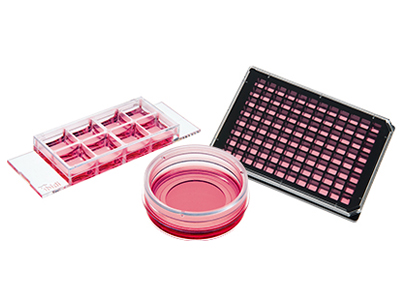The Principle of Transfection
Transfection is defined as the process of inserting nucleic acids (e.g., plasmid DNA, cDNA, mRNA, miRNA, siRNA) into the cytoplasm of eukaryotic cells. In addition, proteins and nanoparticles such as beads or dyes can be transfected.
In the field of cell biology, transfection is an important and widely used tool for analyzing the function of various genes. This method can be used for gene silencing via RNAi, gene editing via CRISPR/Cas9, as well as overexpression studies by cellular integration of plasmid DNA, mRNA, or proteins. Many researchers conduct transfection experiments on a daily basis, which requires a concise understanding of the biological background, precise and detailed planning, and a robust transfection protocol.
Kim T.K., Eberwine J.H. Mammalian cell transfection: The present and the future. Anal Bioanal Chem, 2010, 10.1007/s00216-010-3821-6
read abstract
Choose Your ibidi Product for Your Transfection Method:

ibidi Labware
Different volumes and geometries, ideal for transfection experiments.
Read on and learn more about Transfection Methods.




